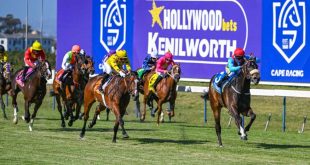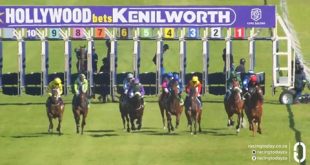An interesting study done by The Mirror racing correspondent in England a few years ago revealed a system, which involved an increase in distance for a young horse making its handicapping debut, to be the most consistently profitable. However, it would require a lot of patience and discipline to follow.
A letter sent by a reader was the prompt for the study.
The reader had the idea of backing every horse which was making its handicap debut having had exactly three runs.
The Mirror correspondent’s research revealed only 20.8 percent of such runners won, and it amounted to a loss of 9p for every £1 staked.
However, the system got him thinking and he posed the question: What would happen if such a horse i.e. one making its handicap debut after having had exactly three runs, made that handicap debut in a race where the distance of the race was different to that which it had campaigned over before?
He elaborated, “Just think about it. If you were a trainer or owner and the breeding of your pride and joy suggests it needs at least a mile to show its best, there is nothing in the rules of racing to say you can’t run it three times in sprints, get a handicap mark, and then run it in a handicap over what is likely to be a more suitable trip.”
He continued, “Even on a powerful computer the stats for this take some time to calculate but it was worth doing.
The rules he set were:
On the Flat, look for a horse making its handicap debut in a race that is more than a furlong and a half further than it had raced over on any occasion before.
The result was a return of £1.11 for every £1 staked – or a profit of 11 per cent.
He concluded, “Interestingly, the profit was pretty consistent each year for the last ten years.”
Unfortunately, applying it to South African racing would be impossible due to local trainers’ obstinacy in running maidens in handicaps.
Like the UK, a non-winning maiden in South Africa is allowed to run in a handicap after three runs, but unlike the UK a maiden running in a handicap in South Africa is a rare occurrence.
It makes sense to run such horses in handicaps as they will be up against horses with similar merit ratings, while in maidens the same race can include anything from future champions to battlers.
There is no certainty in racing and no replacement for form study, finding value and being disciplined in only betting on value.
However, with small money, following systems can provide a lot of fun.
Some of the popular systems regularly applied were listed by racing man Glenn O’Brien:
1) 1400m specialists: The logic is this trip produces racing’s most potent specialists, being neither a sprint nor a mile. These specialists usually have the upper hand over failed sprinters stepping up in trip or failed milers dropping in trip. To apply it take races from 1350m to 1450m and back the shortest priced horse who has recorded two or more wins over the distance.
2) Against the short prices: Logic: When there is a short-priced favourite, the true value often lies with the main danger.
3) Backing the best horse: This system identifies the highest rated horse at any meeting and backs it. Logic, true class can pull a horse through under any circumstance.
4) Beaten favourites after a rest: A beaten favourite might not have run its true race and to make amends the connections wait for an ideal opportunity to make amends. To apply this system the next race must come over the right distance at least 30 days after the defeat.
5) Beaten favourites with sights lowered: A beaten favourite next appearing over the right distance in a lower class or lesser quality race.
Glenn O’Brien lists over 50 systems on his website: www.glennobrien.net/horse-racing-systems.html
By David Thiselton







